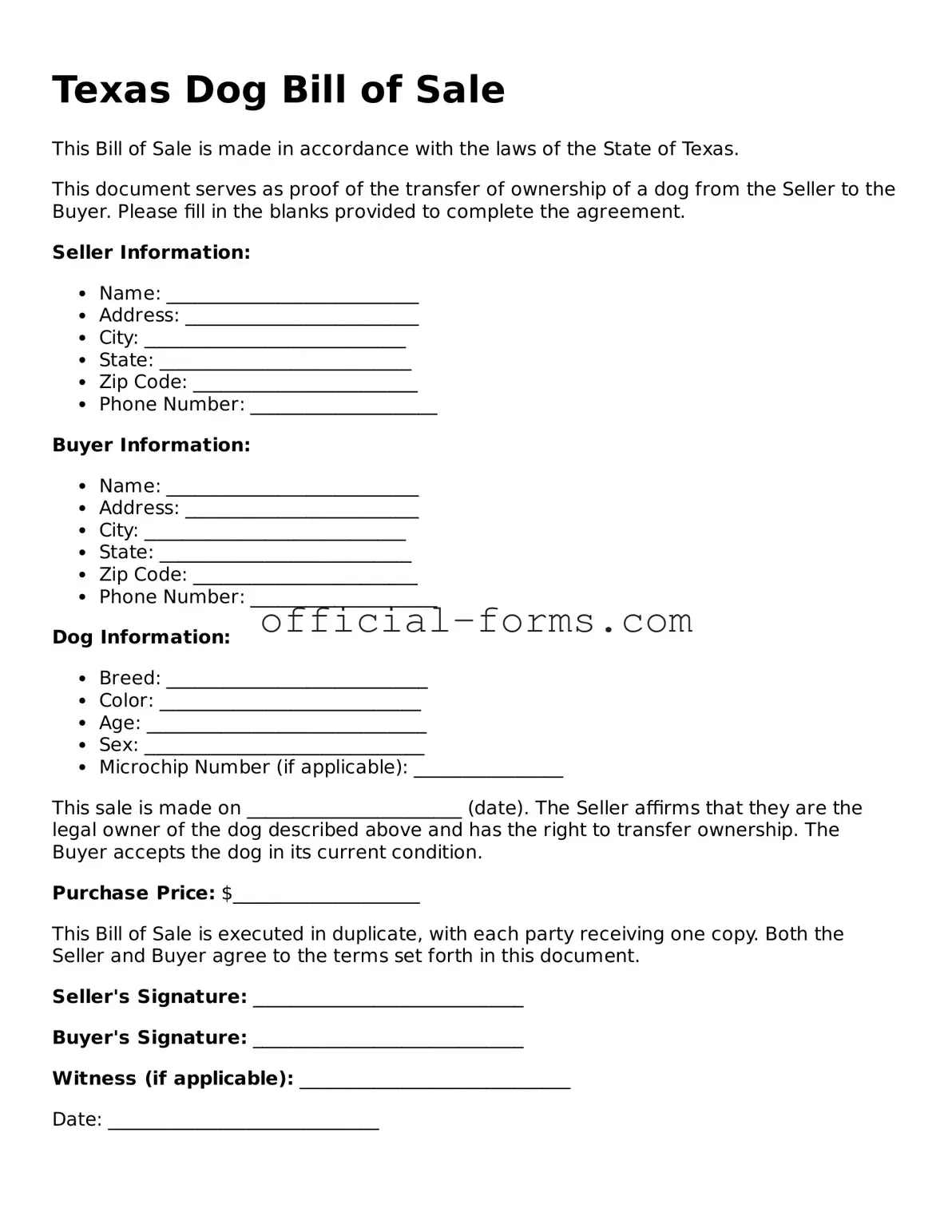When filling out the Texas Dog Bill of Sale form, individuals often make several common mistakes that can lead to complications down the line. One frequent error is neglecting to provide complete information about the dog. Buyers and sellers should include the dog's breed, age, color, and any distinguishing marks. Omitting these details can create confusion and disputes later.
Another mistake is failing to include the seller's contact information. It is essential for both parties to have a way to reach each other after the sale. Missing contact information can complicate matters if the buyer has questions or concerns about the dog.
People sometimes overlook the importance of signatures. Both the buyer and seller must sign the form for it to be legally binding. Without these signatures, the document may not hold up in a dispute. It is also advisable to date the form, as this provides a clear timeline of the transaction.
Some individuals mistakenly assume that the Bill of Sale is a complete transfer of ownership without understanding the legal implications. A Bill of Sale is important, but it does not replace the need for proper registration with local authorities. Buyers should ensure that they follow up with the necessary registrations to avoid any legal issues.
Additionally, many people fail to discuss the dog's health status before completing the sale. It is crucial to disclose any known health issues or vaccinations. This transparency helps build trust and can prevent future conflicts between the buyer and seller.
Another common oversight is not keeping a copy of the completed Bill of Sale. Both parties should retain a copy for their records. This documentation can serve as proof of ownership and the terms of the sale if any disputes arise later.
Some sellers mistakenly think that the Bill of Sale absolves them of all responsibility for the dog after the sale. While the Bill of Sale transfers ownership, it does not eliminate the seller's obligation to provide accurate information about the dog's condition. Buyers deserve to know what they are getting into.
Moreover, people often forget to include payment details. Clearly stating the sale price and payment method helps prevent misunderstandings. It also establishes a clear record of the transaction.
Another mistake involves not verifying the buyer's identity. Sellers should ensure they know who they are selling to. This step can help avoid potential issues, especially if the dog is later found in a harmful situation.
Finally, individuals sometimes rush through the form without reading it thoroughly. Taking the time to review the entire document can help catch errors and ensure that all necessary information is included. A careful approach can save both parties from future complications.
